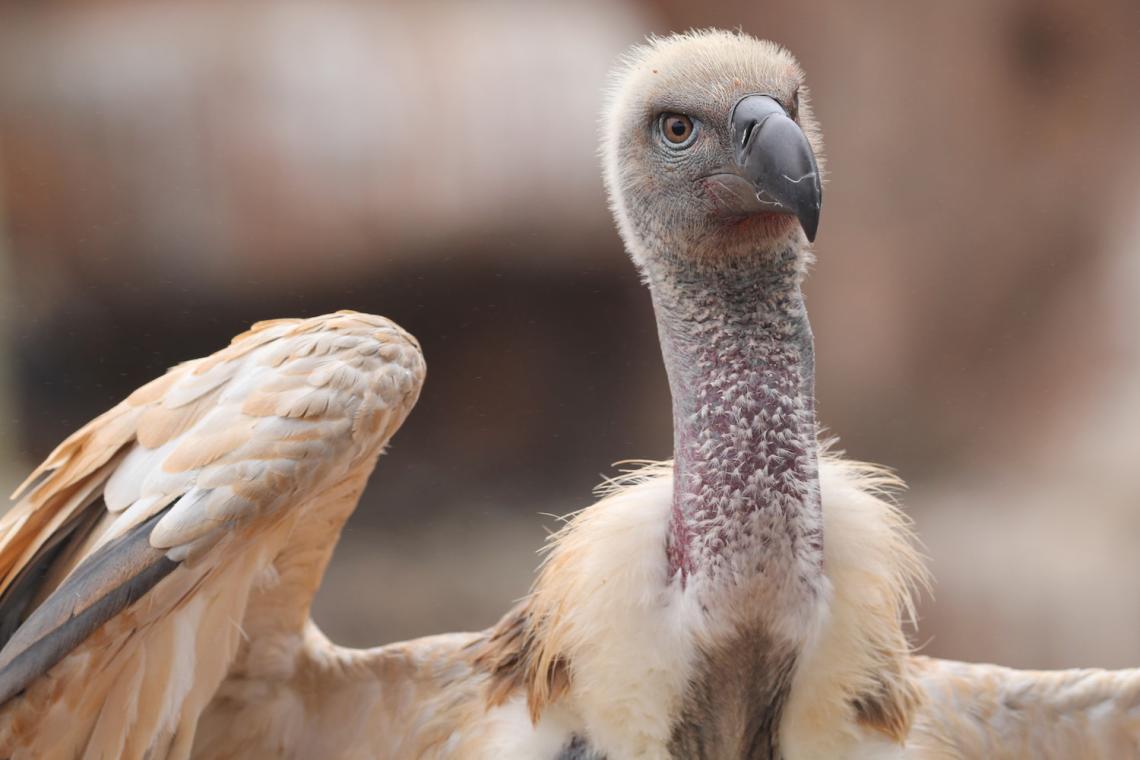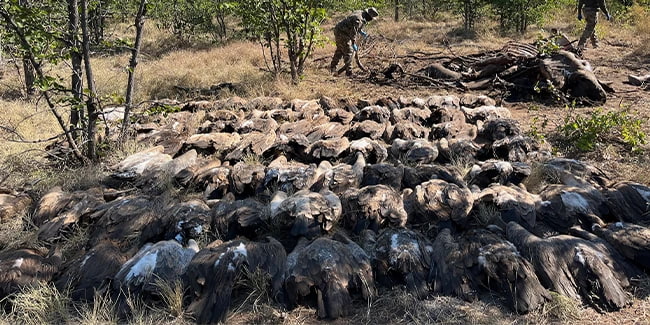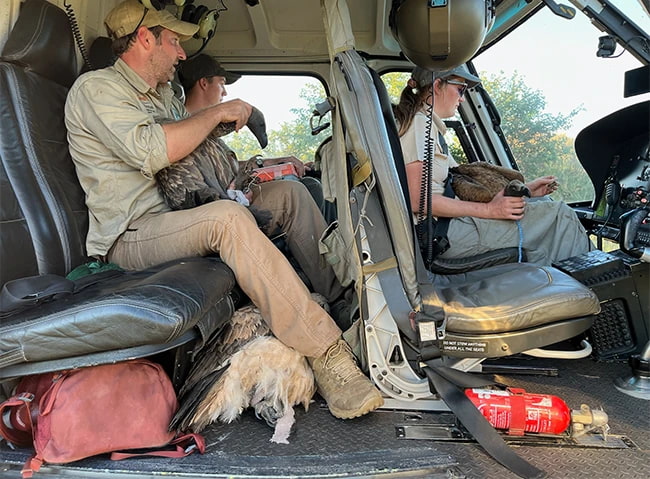One of the Largest: Vulture Poisoning Claims 123 Lives, But 84 Saved

According to a joint media release by South African National Parks (SANParks) and the Endangered Wildlife Trust (EWT), 84 vultures were rescued after a mass poisoning incident in Kruger National Park on 8 May 2025, showcasing the power of swift action and collaboration.
The Poaching Poison Trap
The EWT’s pioneering wildlife poisoning surveillance and detection system flagged suspicious activity at 06:05 on 8 May 2025 in the remote Mahlangeni Section of the park, and by 08:20 a combined team of SANParks rangers and EWT officials was on site to confront the grim scene.

An Elephant (Loxodonta africana) carcass laced with highly toxic agrochemical pesticides had been used by poachers to harvest body parts for the illegal wildlife trade. While the team found 116 vultures dead on arrival, a total of 123 individuals were ultimately confirmed dead at the site—102 White-backed Vultures (Gyps africanus), 20 Cape Vultures (Gyps coprotheres) and one Lappet-faced Vulture (Torgos tracheliotos), all listed as endangered or critically endangered.
Rapid Response and Rehabilitation
Initial responders discovered two surviving vultures approximately 500 metres from the carcass and administered emergency first aid, including atropine, activated charcoal and fluid therapy. Reinforcements from Moholoholo Wildlife Rehabilitation Centre, Briner Veterinary Services and Wildscapes Veterinary Services soon joined SANParks rangers and the Hope for Wildlife helicopter to mount a large-scale rescue.

Eighty-four vultures—comprising White-backed Vultures (Gyps africanus), Cape Vultures (Gyps coprotheres) and Hooded Vultures (Necrosyrtes monachus)—were stabilised and evacuated. Forty-five were transported in the EWT’s specialised vulture ambulance, a mobile unit designed to provide in-transit care; thirty-nine were airlifted by helicopter to SANParks’ K9 facility in Phalaborwa for immediate monitoring; and the remainder were taken to Moholoholo for intensive overnight treatment. Despite these efforts, five vultures succumbed to poisoning, but the operation achieved a remarkable 96 per cent survival rate among those found alive. As of the morning of 8 May, 83 vultures remain under veterinary care and are recovering.
Impact and Partnerships
This incident marks one of the largest vulture poisoning events recorded in Southern Africa, and the most extensive coordinated wildlife rescue of its kind in Kruger National Park. More than 20 individuals from conservation, veterinary and enforcement sectors contributed to the operation. “Without rapid detection by the EWT’s wildlife poisoning detection and surveillance system and the unprecedented cooperation between NGOs, rangers, vets and SANParks aerial and ranger units, many more birds would have been lost,” the release notes.
Confronting a Growing Threat
Wildlife poisoning is on the rise across southern Africa as poachers turn to agricultural toxins to target high-value species, including vultures and lions, for traditional medicine or muthi. Vulture populations in the Greater Kruger Landscape are already struggling to recover from past poisonings. SANParks is collaborating with various agencies to address this growing threat, and the success of the latest rescue underscores the vital role of partnerships, rapid response and specialised veterinary care in combating wildlife crime and securing a future for these critical scavengers.
Kerri Wolter, CEO at Vulpro, emphasised the devastating impact of such losses, stating, “To lose this many vultures under the watch of authorities and especially when we are so close to breeding season is devastating as they are increasingly being targeted by crime syndicates.” While acknowledging the importance of conservation initiatives, she stressed, “Such events underscore the urgent need for strategic partnerships and a shared commitment to conservation, making our specialist captive breeding programme, developed with Shamwari Private Game Reserve, more critical now than ever.”
This article was curated, reviewed, and verified by the Conservation Mag team—further reading: https://voxlite.everlytic.net/public/messages/view-online/tmNKif4ArlfzNEiu/ag0PiGXE7AxWjHu1.
Main image by: Vulpro
Discuss this article
Clicking links may earn us commission. . Stock images by Depositphotos.
Subscribe: Stories about wildlife, habitats and heroes
Welcome to Conservation Mag where we celebrate nature preservation through ecotourism and wildlife travel while we look for ways to preserve our heritage by supporting nature conservation. Starting conversations about the positive action people like you and I are taking to make a change.
Quick Links
Work With Us
![]()

